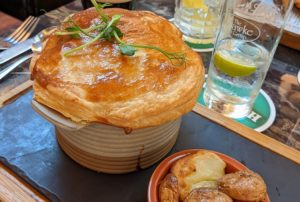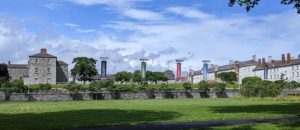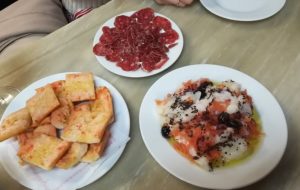In the eight in a series of weekly blogs, IAFS/Learn intern Lauren Nofi reports on the progress in the post-excavation laboratory.
Hello, all! Briefer blog this week as we are still washing in post-ex!
Last week I wrote about all manner of bone-washing. This week we continued and finished cleaning all of our disarticulated human bones and sought to also process our animal bone excavated during this winter season.
One particularly exciting part of examining our animal bones as we wash them is when come across signs of butchery or other consumption via cut marks. Even fellow intern Ciarán was quite tickled to come across any of these signs, which only means one thing: HE’S ONE OF US (ONE OF US, ONE OF US). This is a particularly nerdy archaeological thing to get excited about, but ask anyone working with animal bone in an analysis context, and they’d probably say the same. There’s just something cool about holding in your hand someone else’s dinner from nearly 800 years ago! Unfortunately I couldn’t get a good photograph of cut marks, just due to the lighting, but if I come across a particularly aesthetically pleasing example I will post it.


We had one feature which produced so much animal bone in our brief winter season it took several crowded drying racks just to accommodate it all! In the previous pictures you can see fairly robust bones and fragments, but sometimes we were working with much smaller quantities.
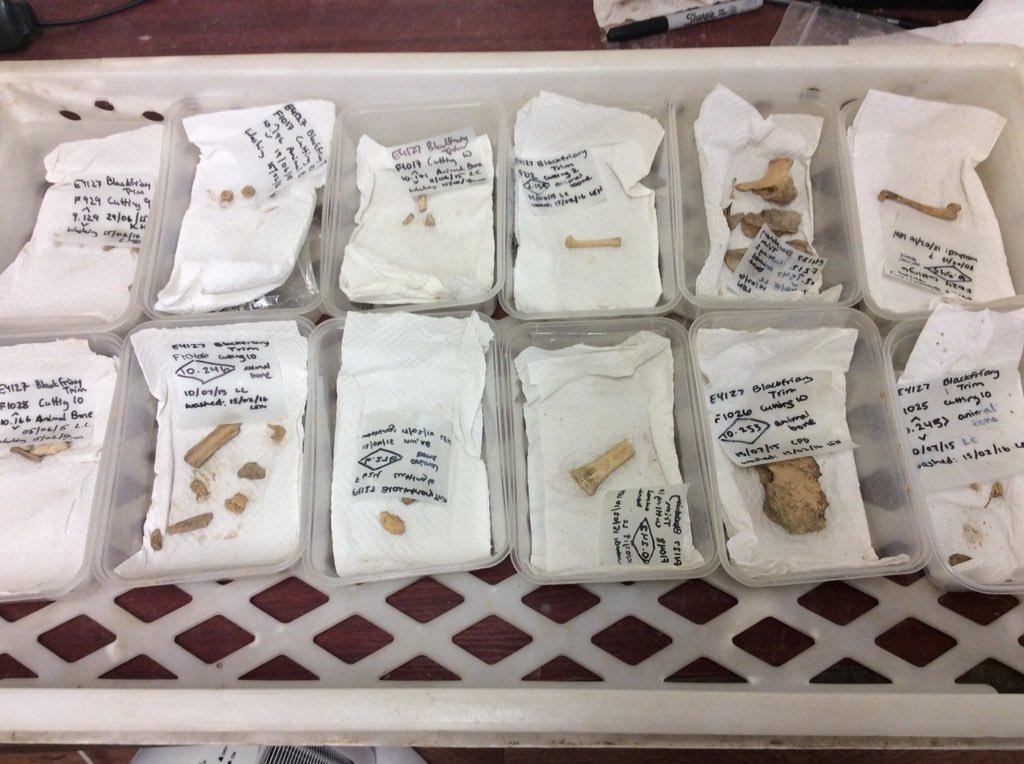
At our site, animal bone is considered a sample. Samples are taken for a few reasons, but most often for statistical or specialist analysis. Notice the tags have numbers in a diamond or lozenge shape. This is how at a glance we can know whether the bones we are encountering have been classified as human or animal, since, of the two, only animal bone receives this designated shape. Recall our disarticulated human remains all had a specially assigned DHB number. Similarly, our animal bone samples will all have a sample number which relates to the cutting from which it came.
In addition to working with all all this animal bone, I started washing some material I found quite moving: an infant burial. The bones themselves are ever-so-delicate and really require a soft touch. The process itself is slightly different as the excavators kept associate bones together, so I have bags for each hand, each arm, each leg, and so forth, to clean and let dry separately. (Once dry this will all be packed both to simulate the order of bones in the body but also allow the more fragile bones like the skull to be kept from damage.) Naturally I was briefly petrified as I picked up the very first fragment of cranium. Even though I have obviously worked with human skeletal material before, this has so far been some of the most difficult work. Not only does it necessitate fine motor skills, but the entire process sparks another mini-existential crisis like I mentioned last week over the tiny person in your hands. It reminded me that human bone was once part of a person; seeing, thinking, feeling. With that in mind, we always treat human remains with the utmost respect.
I’ll keep you all updated as I finish this, and we begin working with some of our worked artefacts.
